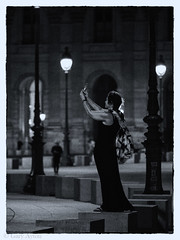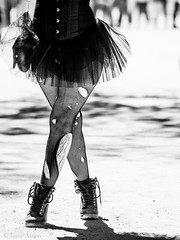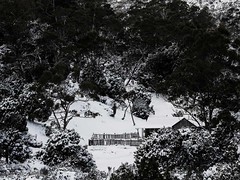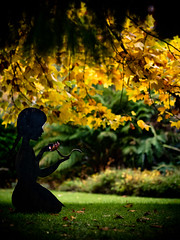Last week I went on a road trip to outback Australia to play with my new Olympus OM-D E-M5 Micro Four Thirds camera and primarily used it with the lovely but moderately expensive Olympus m.Zuiko Digital 12mm f/2.0 lens.
Part of camping out in the beautiful night skies of the remote regions of Australia well away from light pollution of the cities is to just lie back and observe the myriad stars while waiting for meteors – fantastic in the desert regions in May where there are no mosquitoes to annoy you and the night is not yet too cold as to be uncomfortable.
What better time to see how this amazing camera can make astrophotography easier.
Unfortunately, I did not bring my telescope mount to provide guided long exposures and so had to limit myself to tripod mounted long exposures.
How does the E-M5 make life easier for astrophotography?
- no mirror, so no need to remember to set mirror lockup to prevent camera shake
- no mirror, so live view is easy to use
- flip out LCD avoids having to strain looking at awkward angles, particularly when shooting straight upwards
- AF is good enough to AF on bright stars as long as the sky is dark and offering good contrast and you have a wide aperture lens such as f/2.0
- touch LCD can be set to AF only thus makes it easier to AF on a bright star instead of having to manually move the AF region onto the star
- magnified manual focus is easy to use if AF does not work
- can set Live Boost ON to make it easier to see the fainter stars on the LCD
- can use Live BULB so that they can see the image forming during long exposures – very handy to check that you have the composition correct and abort the exposure if it isn’t instead of waiting a full 1-2 minutes to find out
- NR ON automatically performs a dark frame subtraction for long exposures
- ISO 1600 is VERY usable
- timed shutter speeds extend to 60secs in manual mode (most cameras only go to 30secs which is inadequate for most astrophotography)
- can set a timed limit to BULB and Live TIME of 1, 2, 4, 8, 15, 20, 25, or 30 minutes – very few cameras have this feature
- camera is light so that mounting it on telescopes causes less issues with weight balancing compared to a full frame dSLR
- can use a remote cable and set drive mode to continuous and AntiShock to the interval between exposures to work as an intervalometer
- can attach a TriggerTrap cable and use your iPod or iPhone to control intervalometer aspects
- can use almost any lens ever made (via adapters) as well as direct attachment to eyepiece of telescopes (via M43-T2 adapters)
One of the holy grails of astrophotographers is to find a wide angle lens that captures stars as points instead of with the usual spherocoma and astigmatism aberrations which are a characteristic of nearly all wide angle lenses.
My main aspiration of this test was to see how the AF and MF worked as well as to determine if the Olympus 12mm f/2.0 would perform in this very demanding domain.
During my trip I found the Olympus 12mm to be superb for most of my needs such as hand held infrared photography, hand held urban night street scenes, and general travel photography but like nearly every other wide angle lens ever made, it too was not optimised for astrophotography and the over-exposed brighter stars had the very annoying coma and astigmatism with purple CA in the coma aberration:
Milky Way with Southern Cross and Centaurus on top right and Scorpius bottom left: Olympus 12mm at f/2.0 ISO 1600 20 secs (click for larger view):

Note that I did play with contrast a bit on this image but I did not do any CA correction.
So as lovely as this lens is, and with the very nice switchable manual focus controls, it is a useful but not brilliant, astrophotography lens.
Full frame astrophotographers generally resort to expensive wide angle lenses such as the Zeiss 21mm f/2.8, although I have heard the Samyang/Rokinon 14mm f/2.8 does an admirable job and is very cheap in comparison, so this lens may be the answer for Micro Four Thirds users needing a wider angle than a Panasonic Leica-D 25mm f/1.4.
I also briefly tested the Olympus m.ZD 45mm f/1.8 lens and this performed better but still had CA around the bright stars and there was some coma and astigmatism in the corners. Unfortunately, the focal length of this lens means tripod mounted images are restricted to about 8-10secs to avoid obvious star trailing.
For those who are interested, THIS LINK will open a full jpeg straight from camera of a dark frame at room temperature (~16degC) from the E-M5 taken at ISO 1600 and 60secs exposure with no dark frame subtratction (NR = OFF) and Noise Filter = LOW.
Now I will be even better prepared for the next bright comet that comes our way, here is a manually guided image of Comet McNaught I took with an Olympus E330 and an Olympus OM 50mm lens in January 2007:











